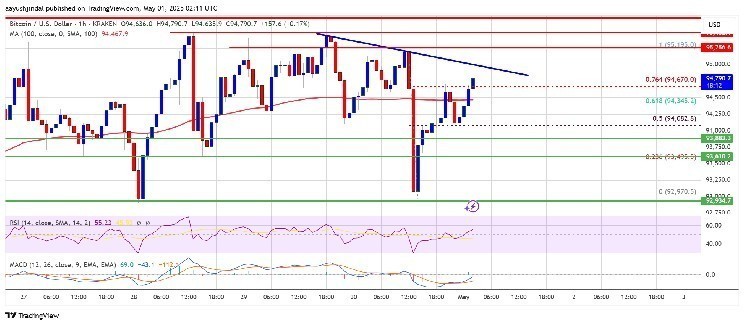Willy Woo’s Bitcoin Forecast: Challenging Traditional Metrics and Predicting Price Recovery
Renowned Analyst Revises Bitcoin Assessment Methods, Projects Upward Trend in Coming Weeks
In the fast-evolving landscape of cryptocurrency analysis, veteran market observer Willy Woo has recently challenged conventional wisdom regarding Bitcoin price movements while offering an optimistic outlook for the near future. Woo, whose technical analyses have gained substantial following among crypto investors, has taken aim at traditional metrics that may be providing misleading signals in today’s complex market environment.
The analyst has specifically targeted the long-term holder (LTH) metric—a measurement tracking Bitcoins held for more than five months—as fundamentally flawed in the current market context. According to Woo, this outdated framework fails to capture the nuanced dynamics of Bitcoin’s ownership transfers, particularly as institutional players continue to reshape market behavior. “It wouldn’t be accurate to say that long-term investors are selling and that’s why the price is falling,” Woo explained in his recent assessment, challenging the simplistic narratives that often dominate market commentary.
Ownership Rotation Rather Than Simple Sell-Offs
The cryptocurrency market’s maturation has introduced complexities that traditional metrics struggle to interpret accurately. Woo argues that what appears as selling pressure from long-term holders actually represents something more sophisticated—a rotation of ownership rather than abandonment of positions. This distinction carries significant implications for market sentiment and price forecasts.
“The selling from long-term investors reflects more of a holding rotation,” Woo clarified, elaborating that “Bitcoins are changing hands to new investors or being transferred to institutional structures such as treasuries.” This perspective offers a fundamentally different interpretation of recent market movements. Rather than signaling diminishing confidence, these transactions may indicate the cryptocurrency’s continued integration into broader financial ecosystems and investment portfolios. Institutional treasuries and new market participants absorbing Bitcoin supply suggests ongoing structural demand that may sustain price levels despite apparent selling pressure from established holders.
Liquidity Indicators Point to Imminent Recovery
Perhaps most compelling for market participants is Woo’s latest technical assessment shared through his X (formerly Twitter) social media account. The analyst has identified encouraging developments in Bitcoin’s liquidity indicators—technical signals that often precede price movements. According to his analysis, these metrics have begun showing preliminary signs of recovery, potentially foreshadowing positive price action in the near term.
The liquidity indicator, which Woo describes as a “leading signal,” appears to be turning a corner after recent market turbulence. “If this liquidity recovery trend continues, Bitcoin’s price will enter an uptrend in about two weeks,” Woo projected. This timeline offers investors a specific window to monitor for potential confirmation of his analysis. Market participants familiar with Woo’s methodology note that his liquidity assessments have previously identified significant turning points in Bitcoin’s price action, though as with all forecasts, they carry inherent uncertainty.
Market Context and Current Trading Status
The timing of Woo’s analysis comes as Bitcoin continues to demonstrate remarkable resilience at six-figure valuations. The premiere cryptocurrency has maintained trading above $100,000, with recent 24-hour performance showing modest gains of approximately 1.5 percent. As of the latest data from CoinMarketCap, Bitcoin trades at approximately $103,300—a level that would have seemed improbable to many analysts just a year earlier.
This price stability above the psychologically significant $100,000 threshold comes despite broader market uncertainties, including regulatory developments, macroeconomic pressures, and ongoing discussions about Bitcoin’s role in institutional portfolios. The cryptocurrency has weathered numerous challenges while maintaining these elevated valuations, lending credibility to analysts like Woo who suggest the market may have additional upside potential in the near term. However, investors should recognize that cryptocurrency markets remain highly volatile, with significant price swings possible in compressed timeframes.
Implications for Investors and Market Participants
Understanding the shifting dynamics of Bitcoin ownership carries profound implications for investment strategy. If Woo’s assessment proves accurate, the traditional signals that investors have relied upon to gauge market sentiment may require recalibration. The evolution of cryptocurrency markets from primarily retail-driven speculation to a more diverse ecosystem including institutional treasuries, family offices, and professional investment vehicles necessitates more sophisticated analytical frameworks.
For market participants navigating this environment, Woo’s insights suggest potential opportunities on the horizon while emphasizing the importance of looking beyond simplistic metrics. The possible price recovery within a two-week timeframe offers a testable hypothesis that will either validate or challenge his analytical approach. Prudent investors will likely monitor these developments while maintaining appropriate risk management strategies, recognizing that while expert analysis provides valuable perspective, cryptocurrency investments continue to carry significant volatility and uncertainty. As always in financial markets, past performance and predictions, even from respected analysts, cannot guarantee future results, and investment decisions should be made with careful consideration of individual circumstances and risk tolerance.
This article is for informational purposes only and should not be construed as investment advice. Cryptocurrency investments involve significant risk, and investors should conduct their own research before making financial decisions.


